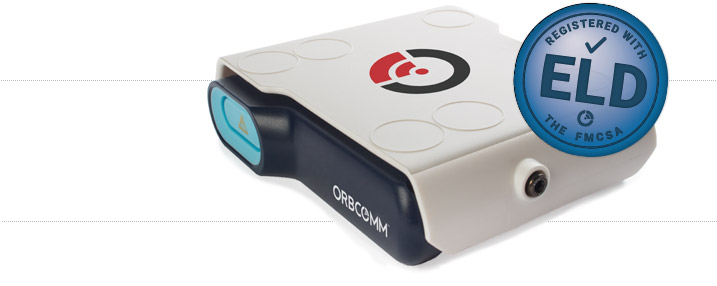
Fleet Safety Talk: Life Behind the Wheel in the Oilfield
- Blog
- IoT Trends
- Fleet Safety Talk: Life Behind the Wheel in the Oilfield
 Driving is quite honestly something that we just take for granted every day. Why you ask? Because it’s become habit. When we climb into our company oilfield cars, trucks and SUVs, our brains are filled with a thousand different thoughts other than driving. Can I make it to work on time in this traffic? What should I fix for dinner? How will my children perform at school today? Is it going to rain?
Driving is quite honestly something that we just take for granted every day. Why you ask? Because it’s become habit. When we climb into our company oilfield cars, trucks and SUVs, our brains are filled with a thousand different thoughts other than driving. Can I make it to work on time in this traffic? What should I fix for dinner? How will my children perform at school today? Is it going to rain?
So why is thinking a problem while driving?
Thinking is a problem while driving because it means you are not focused on what is going on around you, including traffic in front and behind you, whether you remembered to fasten your seatbelt, speeding without even noticing it, or paying attention to what lies ahead.
Vehicle Crash data reported throughout the industry from state and federal agencies as well as independent sources (including the Permian Road Safety Coalition) shows that speed and seatbelt use are the two biggest contributing factors that lead to oilfield-related fatalities, and yet we battle these issues as much today as we did ten years ago.
From 2003 to 2013, the U.S. oil and gas extraction industry experienced unprecedented growth, doubling the size of its workforce and increasing the number of drilling rigs by 71 percent. To describe fatal events among oil and gas workers during this period, CDC analyzed data from the Bureau of Labor Statistics’ (BLS) Census of Fatal Occupational Injuries (CFOI), a comprehensive database of fatal work injuries. Over a third of all worker fatalities were attributed to transportation incidents (479, 40.3%), and more than 50 percent of persons fatally injured were employed by companies that service wells (615, 51.7%).
When you look at the vehicle incidents, as an example in the Permian Basin, there’s a high number of third party-involved recordables, they are at or near intersections and close to town where speed transitions from 70+ mph down to 35-45 mph are common. This is for no other reason than lack of attention while driving and excessive speed.
Take, for example, State Hwy 302 located between Kermit and Mentone, Texas. Traffic from 2010 through 2015 increased from less than 1,000 vehicles per day to more than 5,000. The sheer volume of big trucks blended with light duty vehicles exponentially increased risk and lowered the overall road conditions creating the perfect storm for more incidents. This resulted in 75 recorded incidents during this time frame: 28% Loss of Control, 24% Rear Ended, 15% Head-on, 18% Left Turn, 8% Fixed Object, 4% Right Angle and 3% Side Swiped.
Seventy five percent of these accidents show that the main causes were Failure to Control Speed, Lane Change-Passing, Driver Fatigue, Driver Inattention, and Faulty Evasive Action… all driver behavior-related causes, not road or weather conditions.
The Permian Road Safety Coalition is a perfect example of the industry working with Texas Department of Transportation and other industry experts to evaluate what is happening within their operating area and taking action to improve the condition of the roads and positively affect oil & gas fleet safety.
Why don’t drivers buckle up today? Every time this question comes up in discussion (typically following an accident investigation), managers consistently express frustration that after all these years, employees are still not buckling up. As much as it might surprise and further frustrate company leaders, the answer is that, for most, it’s simply a learned bad behavior. If you look at the sheer number of times that an oilfield service worker gets in and out of his/her truck on any given day, it’s understandable that seat belts would become a nuisance.
We also see instances where an employee gets out of the truck, doesn’t put it in park or set an emergency brake and the truck rolls over him/her. This should never happen, but it does every year. Again, these are learned behaviors that must be changed.
All of that said, the fastest way to implement changes is to consider investing in an In-Vehicle-Monitoring-Solutions (IVMS) program. IVMS programs have become more prevalent over the past few years by companies within the industry looking for ways to curb the number of recordable driving incidents. The overwhelming consensus is that these systems work. IVMS programs have the best impact when the system provides immediate feedback to the driver so that they know they are doing something that is putting them at risk, and they can change the behavior immediately without repercussion. Most of us want to do the right thing and as hard as it is to change the behaviors that put us at risk, we are much more willing to listen and learn when we know we aren’t being scolded or reprimanded for everything we do.

With state-of-the-art verbal coaching technology, ORBCOMM’s Pro-400 talks to drivers, telling them when they’re speeding, driving aggressively or not wearing a seat belt, helping them develop better driving habits.
With the industry growing again, we have already seen a marked increase in the number of recordable incidents and, sadly, expect this trend to continue. One of the predominant reasons attributed to this is SSE – Short Service Employees, who are statistically proven to be at a 40 percent or greater risk of injury and this includes driving. Risk factors include inexperience driving in the oil patch, an increase in work hours or unfamiliarity with the type of equipment driven in the oilfield. All these factors add up to higher risk for some employees.
This is why it is even more critical to have a system in place that is capable of identifying and addressing risky driver behavior in real time, from the first day the new employee starts to work for your organization.
Originally published in Well Servicing Magazine—a publication of the Association of Energy Service Companies (AESC). To learn more about fleet safety solutions, visit our website, schedule a demo or contact us at sales@orbcomm.com.

















